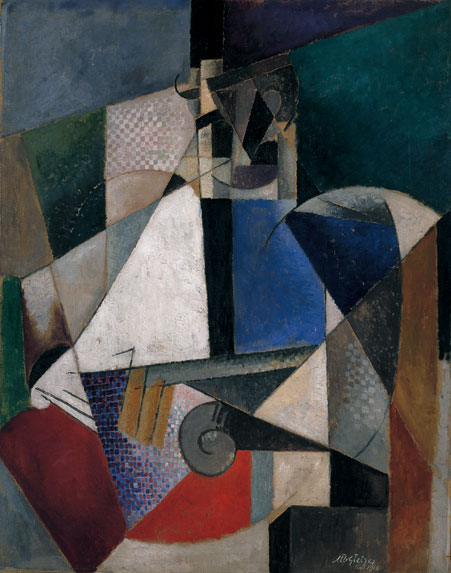Introduction to Modern Art 9/2/04
Cubism
Understanding Cubism is fundamental to understanding 20th art. In simple terms there are two streams flowing into Cubism – one is Cezanne and the other is African art.
Consider the way Cezanne handled perspective in his still lifes and “passage” in his landscapes.
(“Passage” is a way of linking the foreground, middleground and the background).
There is a dialog between the thing represented and the means of representation. There are parts of
a Cezanne picture that could be foreground or background. He is recording what things are like when looked at.
There is a vague sense of “aerial perspective” – the use of colours to suggest distance. The background is bluer and the foreground is redder.
(Linear perspective is showing distance by parallel lines meeting at the horizon.) Passage means areas “bleed” into each other and this locks the elements together on the picture plane. Braque recognised the techniques used by Cezanne. The other thing, especially with his still life, is his distortion of perspective Note:
the still life genre developed in the 17th century and the skill was to closely observe every surface and texture. When you look at something you move your head and your eyes and assemble the view from the jigsaw puzzle of views.
Cezanne wanted to record the process of looking. His art was to do with what it means for man to look at the world, understand it, and represent it. A man is “a hand, an eye and a brain”. His paintings are a report of a process – the process of looking. Braque was a Fauvre but after looking at Cezanne he moved in a new way. Fauvism had liberated colour but not form. Cezanne had liberated form.
Analytic Cubism (c. 1907-11) and Synthetic Cubism (c. 1912-14). The term Hermetic Cubism is also sometimes used to describe Cubism (1911-12).
Slide 1: Paul Cezanne, Mont Sainte-Victoire (1904-6)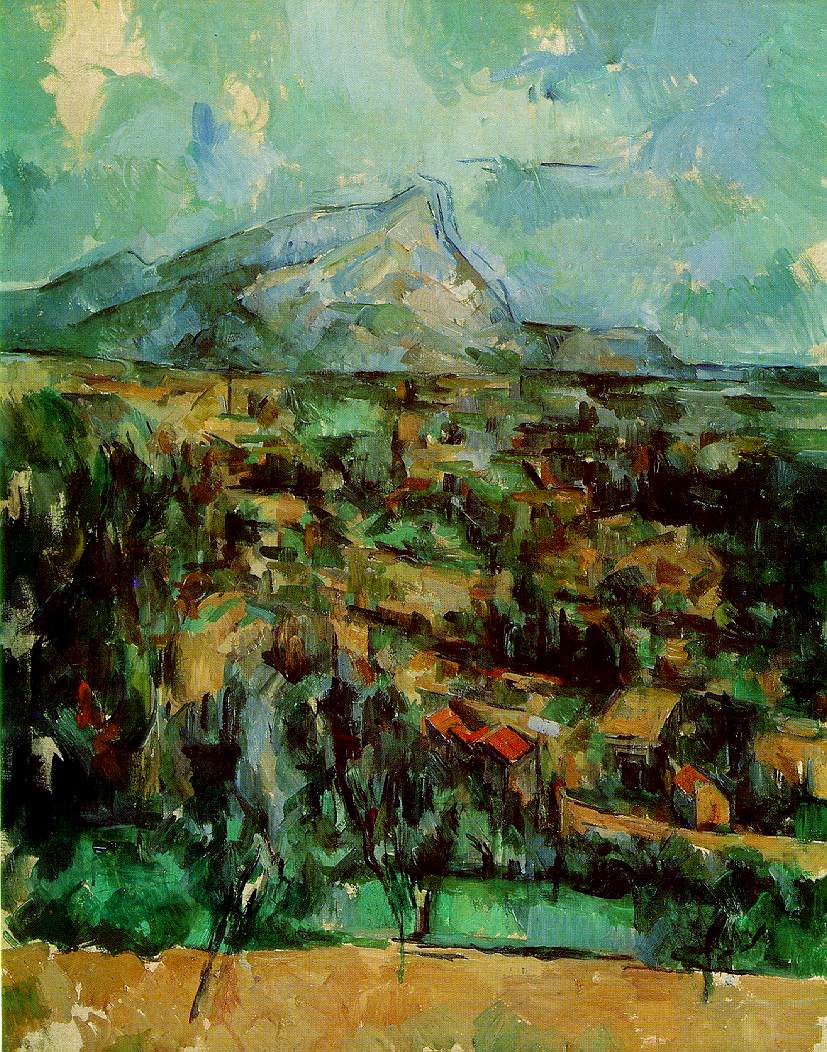
Slide 2: Paul Cezanne, Still-Life with Plaster Cupid (c. 1895)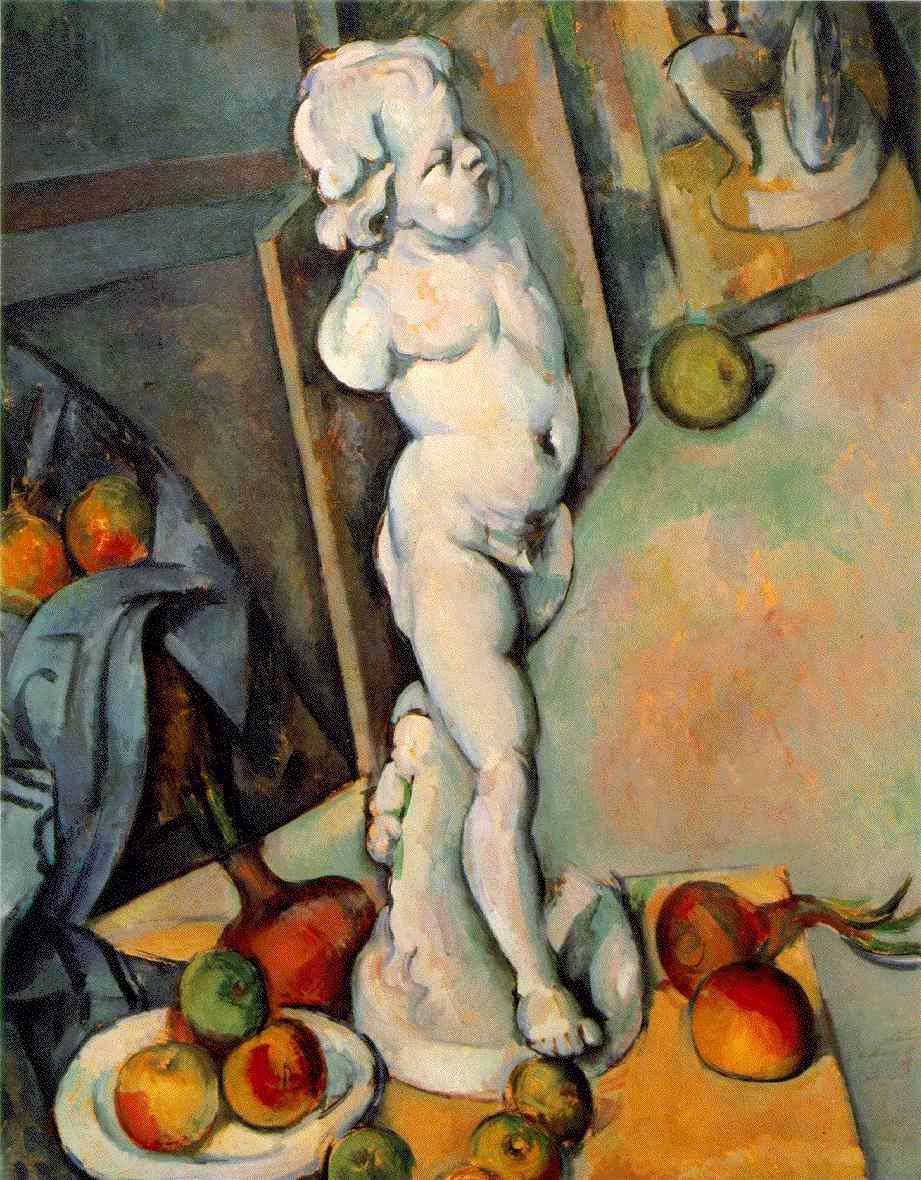
Slide 3: Georges Braque, L’Estaque,
The Harbour (1906)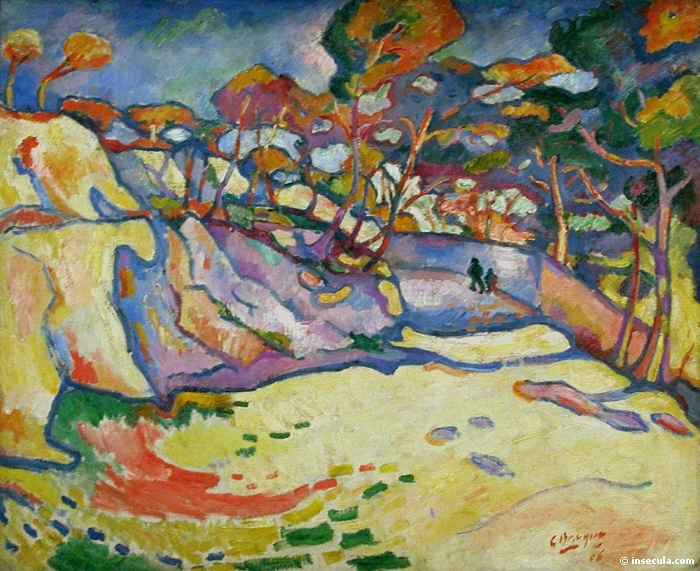
Slide 4: Georges Braque, Landscape at L Estaque (1907)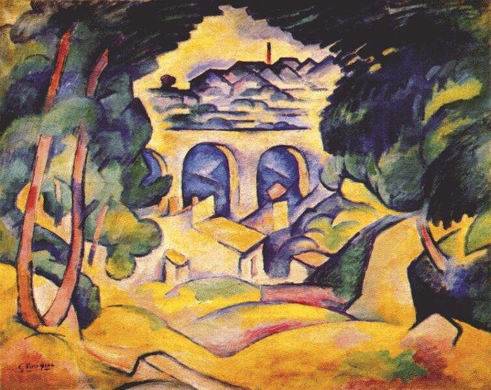
Slide 5: Pablo Picasso, Les Demoiselles dAvignon (1907)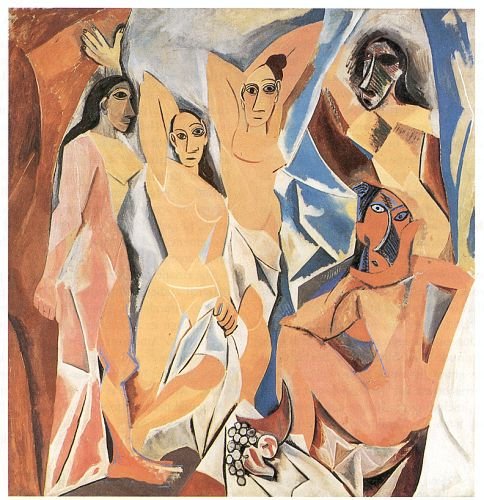
Slide 5 (Demoiselles) the re-presentation not a mimetic representation. African art was not concerned with what people look like. Foreground and background are compressed. Braque painted Large Nude which has a number of views of the nude from different angles. Slide 5
is not Cubist but signals the start of Cubism. Braque and Picasso between 1908
and 1912 were “roped together like mountaineers”.
Slide 6: Braque, Large Nude (1907-8)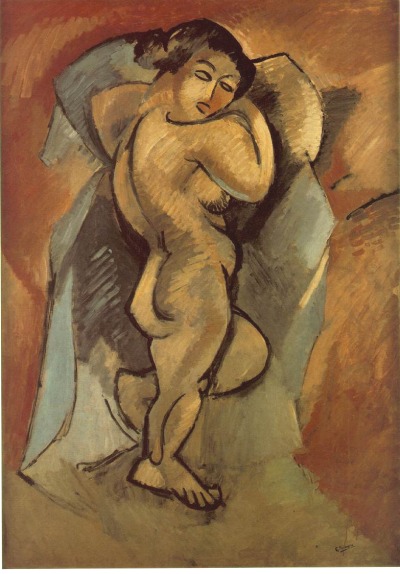
Slide 7: Braque, Maisons a L’Estaque (1908)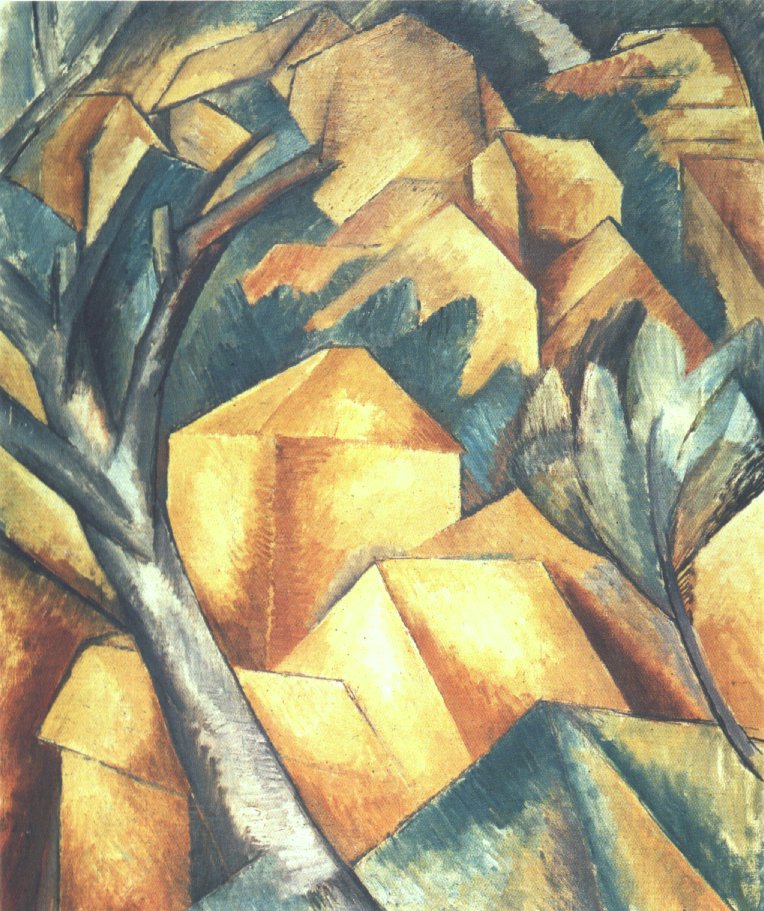
Slide 7. The art critic Louis Vauxcelles inadvertently named the Fauves by poking fun at the “wild beast” nature of the paintings. He also inadvertently named Cubism. Concave and convex surface of house and its roof creates ambiguity. You cannot imagine walking into the space only the eye can travel through the work.
Slide 8: Picasso, Factory at Horta de Ebro (1909)
Slide 8 – we can see down the chimney.
Slide 9: Braque, Rio Tinto Factory at L Estaque (1910)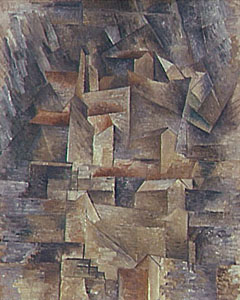
Slide 9 true “passage” development as the foreground and background intermesh. Figures become more important than landscapes because landscape deals with much larger distances. Figures close up are already compressed in space. Reduction of colors to earthy colours to stop the colours creating a perspective.
Slide 10: Picasso, Table with Loaves and Bowl of Fruit (1909)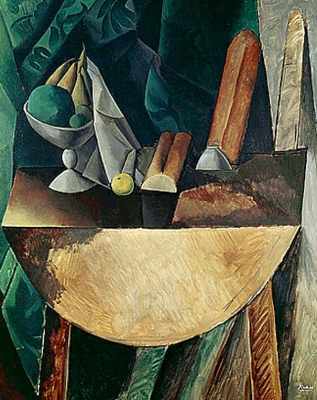
Slide 11: Braque, Still-Life with Violin and Pitcher (1910)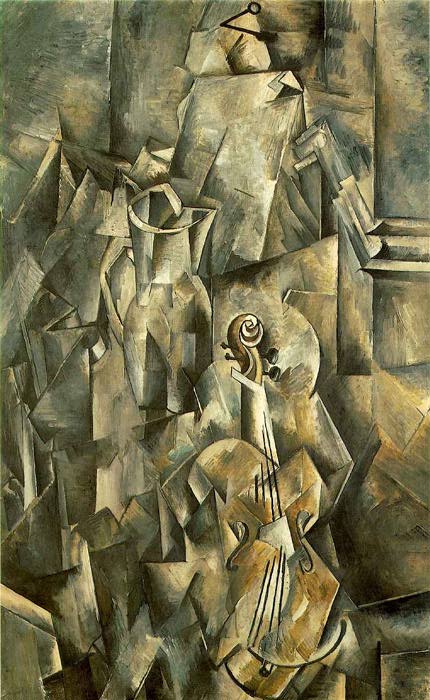
Slide 11 note the nail at the top. Musical instruments and the human figure retain their identity even if only a small part is shown are they were therefore both used a lot in cubist paintings. Changes of perspective are a selected series of views that are indicative of the object so that it can be reconstructed in your head. Platonic – reality consists of the form or idea or e.g. a bed (10th Book of Republic). The idea of bed encapsulates all possible beds, Plato kicked artists out of the Republic as they take you even farther from the truth of a bed. Musical instruments involve many senses – sound, smell as well as appearance. The nail is the one 3D image, it is an illusion, a trick, the nail is the illusion and the violin below the reality, the truth.
Slide 12: Picasso, Woman with Mandolin (1910)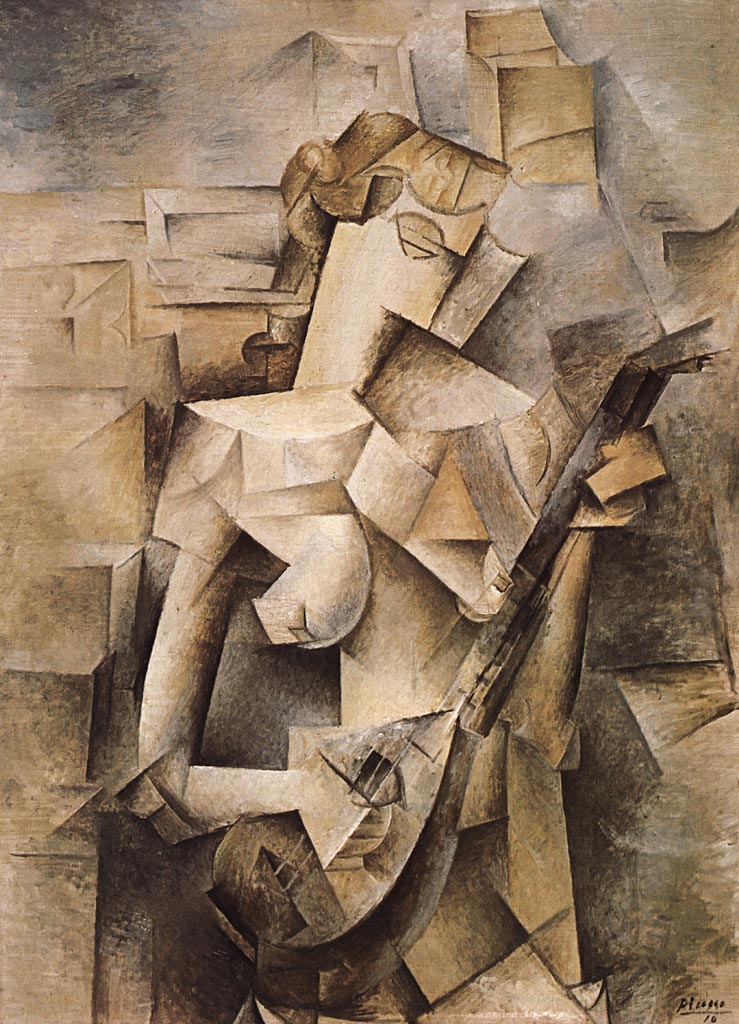
Slide 13: Picasso, Ma Jolie, Woman with Zither or Guitar (1911)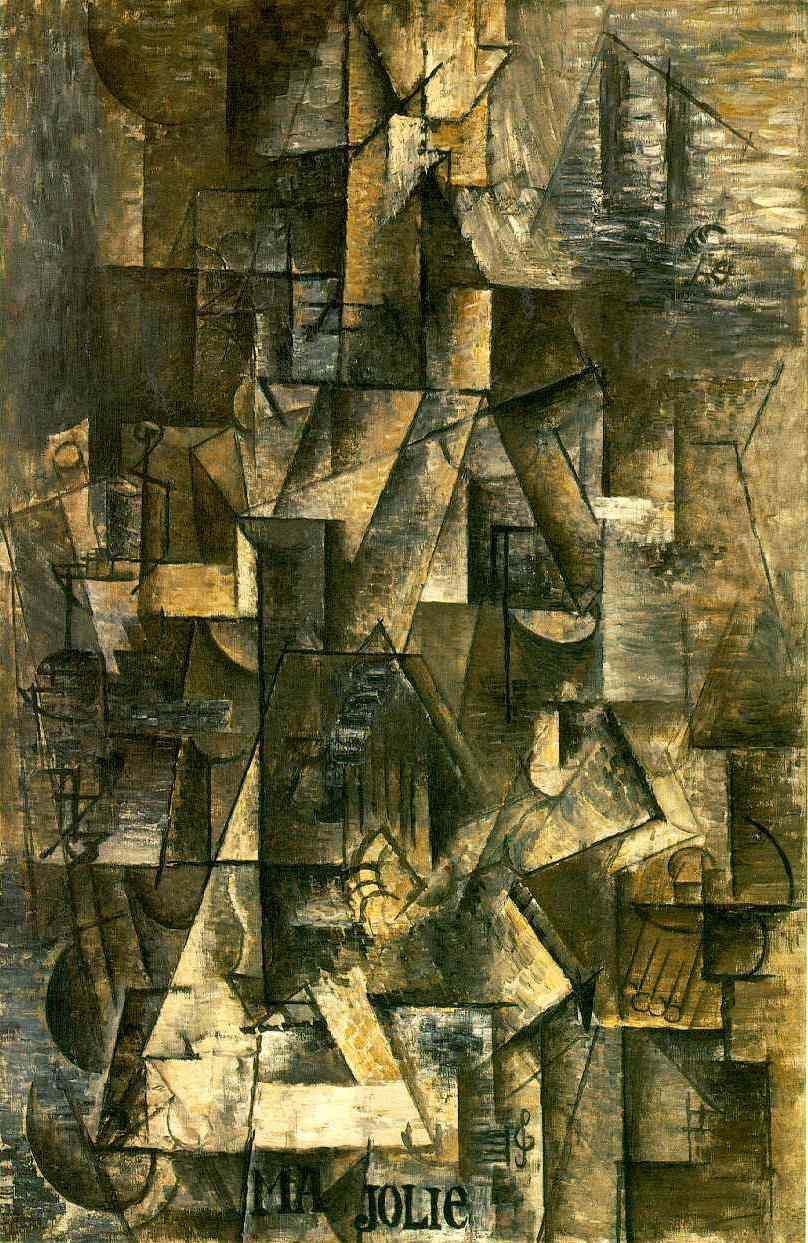
Slide 13 looks like a smashed window. The shift from analytic cubism, where a figure can be discerned. When the figure can no longer be discerned it is hermetic cubism.
Slide 14: Braque, Le Portugais (1911)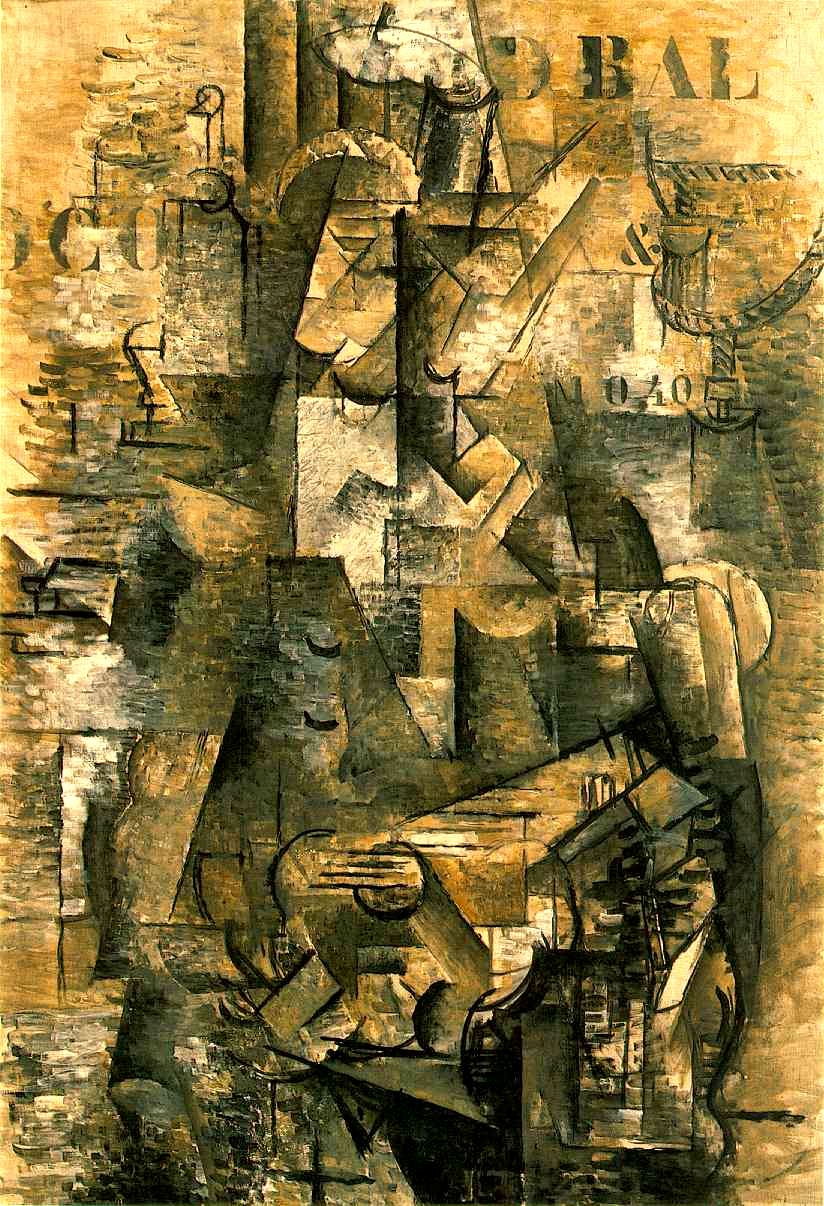
Slides 13 and 14 (Picasso) the instrument is either a zither or a guitar, an arm on an armchair and a musical stand. But it is a closed world – hermetic. Based on a Corot painting. Uses a sophisticated dialog to represent woman with musical instruments -17th and 18th and 19th century woman with musical instruments. Baxendal 15th century image interpretation. Art tells you things, the more sophisticated the questions the deeper the answers. Language and music represent the world in a coded non-mimetic way. Sound hole and fingers refer to female genitals. In 17th Holland ‘lute’ refers to the vagina. So “strum on a lute” had a different meaning. Women used to walk into drinking houses carrying a cardboard lute to signify they were prostitutes. “Ma Jolie” is a private joke – my love – his previous lover. Private language developed between Picasso and Braque.
Slide 15: Braque, Composition with Ace of Clubs (1912-13)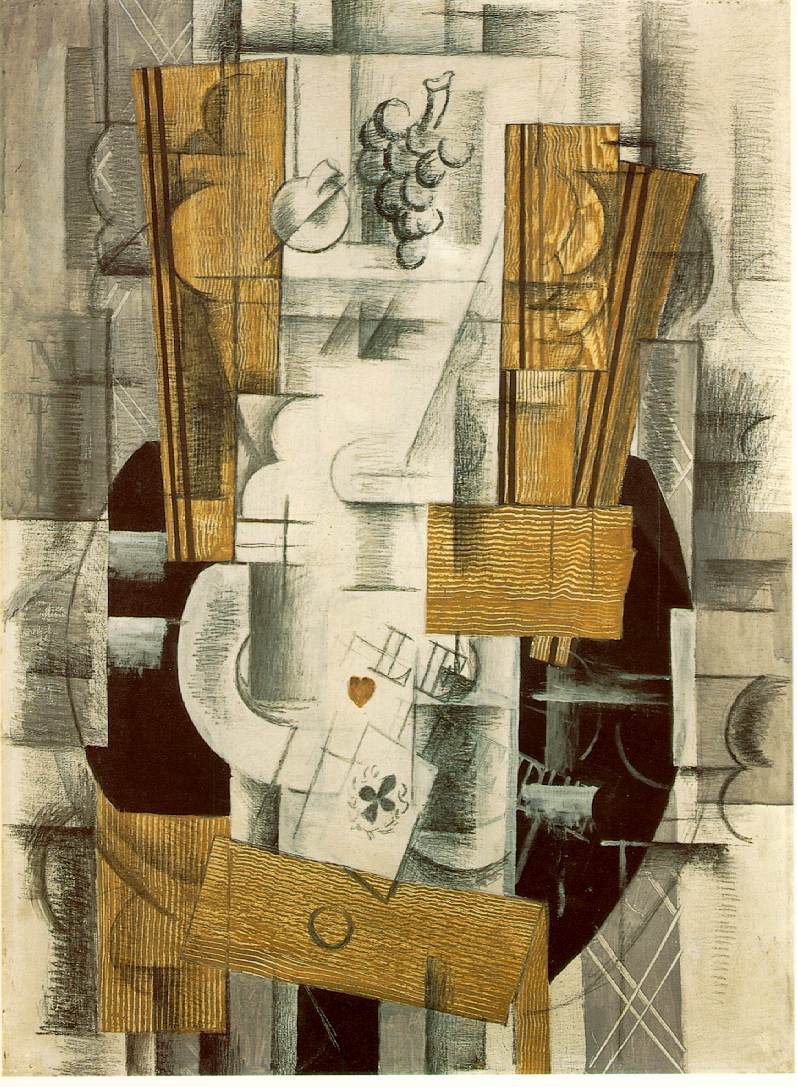
Synthetic cubism (Slide 15 is one of the earliest) introduces things in the outside world into the painting. Braque’s father was a decorator. Decorators used to point fake wood and marble
and trompe l’oeille was of interest to Cubists. Read Pliny – one artist was so great birds would try to peck his grapes, another artist fooled him by painting curtains he tried to open. Magritte is a modem artist who takes up the idea of imitation. Could buy oil cloth from a department store printed so that it looks like chair caning. It is a trick – knife, glass, lemon, wine glass and chair, The “Jou” stands for Journal a newspaper both a specific newspaper at the time (“Le Journal”) and newspapers in general. “Jou” is also the part of other words such as sexual climax and joy. He uses real rope to separate reality from the art work like a frame. Also relates to sailors use of ropes round their artworks in Southern France.
Slide 16: Picasso, Still-Life with Chair-caning (1912) + details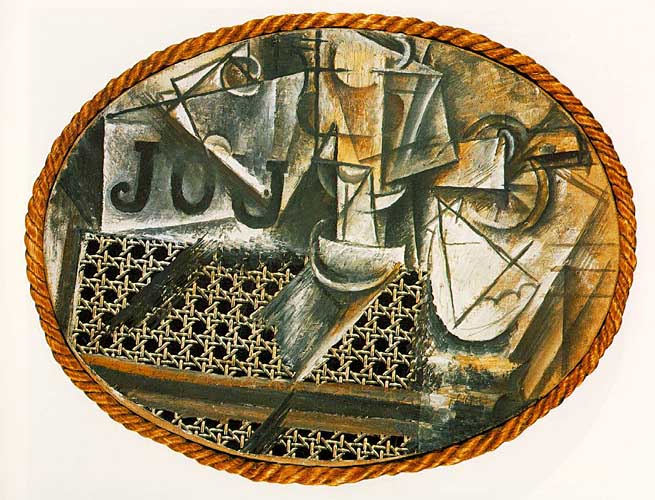
Slide 17: Picasso, Guitar, Sheet music and Wine glass (1912)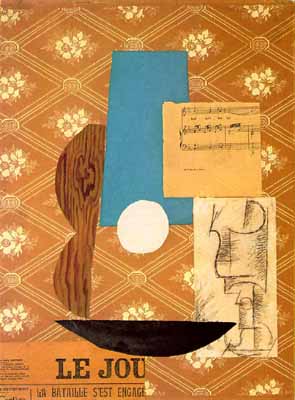
Slide 17 painted when Braque not in Paris. There was a competition between Picasso and Braque, war, war with critics.
In Dickens “Hard Times” Gradgraind talks about measurable things. The background is wallpaper.
The white hole stuck on top inverts the normal idea of a hole as black and going in. Song about time passing. Newspaper article about the war. Music goes into time and disappears as it is produced, time wasting it. The painting contains wine, women, sex, war. The wine glass is a description of a wine glass. The things of value are in danger of being lost. Use of bought bits of simulation wood.
Slide 18: Braque, The Clarinet (or Tenora) (1913)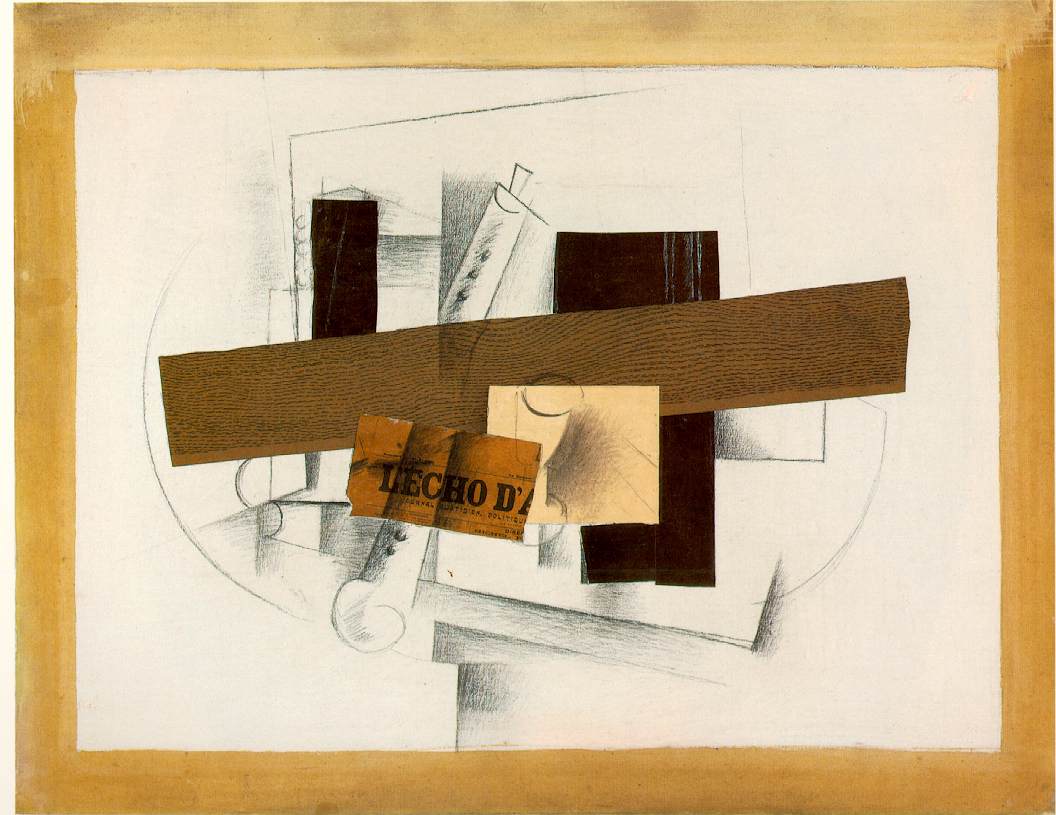
Slide 18 is a tenora, a double reed instrument like an oboe from Northern Spain.
Slide 19: Braque, Bottle, Newspaper, Pipe and Wine glass (1913)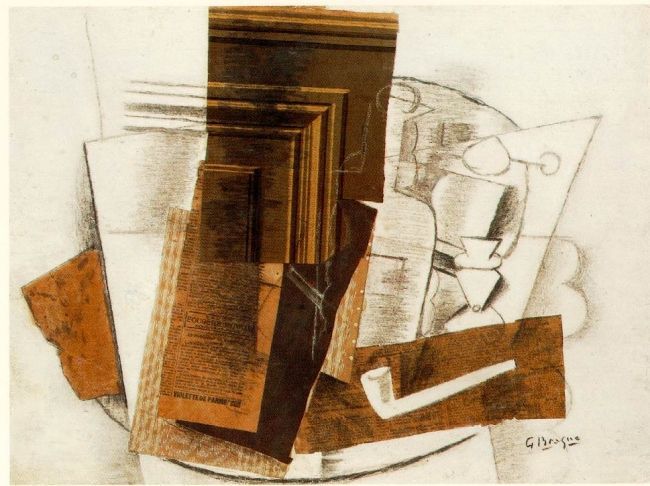
Slide 19 – shape of a pipe cut out from an advert for a pipe – a non-pipe.
Slide 20: Braque, Still-Life with Guitar (1914)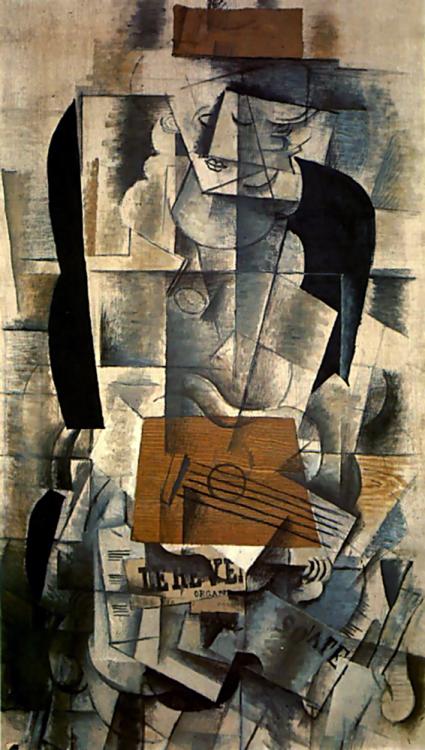
Could not find Still-Life with Guitar
Slide 20 – corrugated cardboard to represent guitar strings.
Slide 21: Picasso, Guitar (sheet metal and wire) (1912)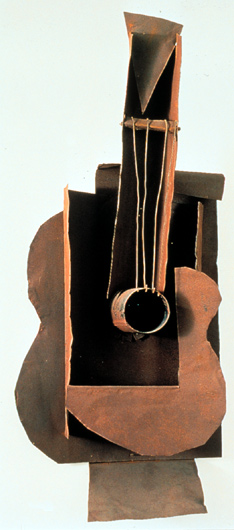
Slide 21 – start of Cubist sculpture, Tube representing phallic hole of guitar
Slide 22: Picasso, Le Verre dAbsinth (painted bronze and spoon) (1914)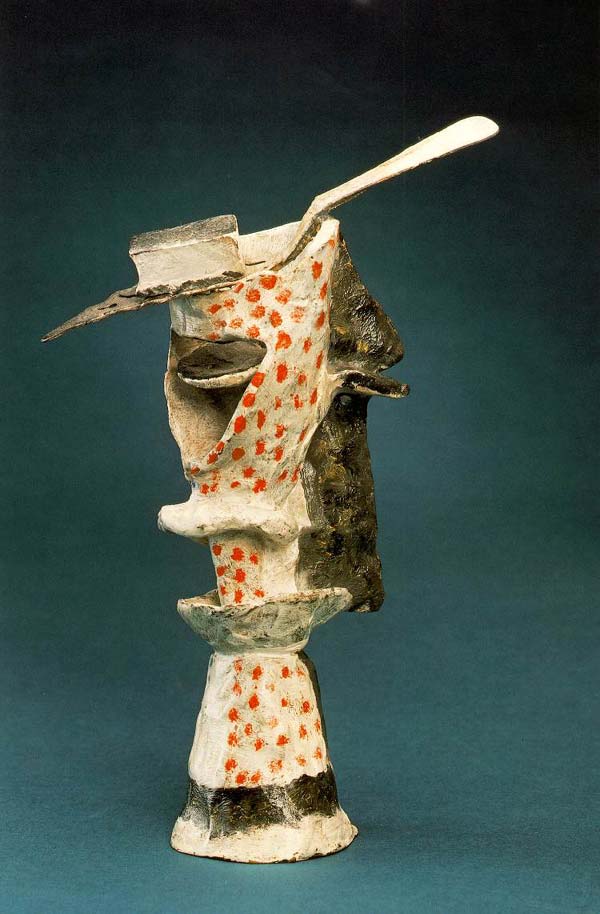
Slide 22 has a real absinthe spoon.
Slide 23: Alexander Archipenko, Walking Woman (bronze) (1912)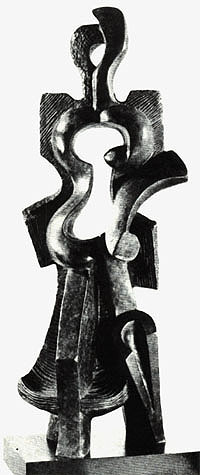
Slide 23 Archipenko introduces the negative space picked up by Moore and Hepworth later. In the second phase Juan Gris joined the group.
Slide 24: Gris, The Watch (1912)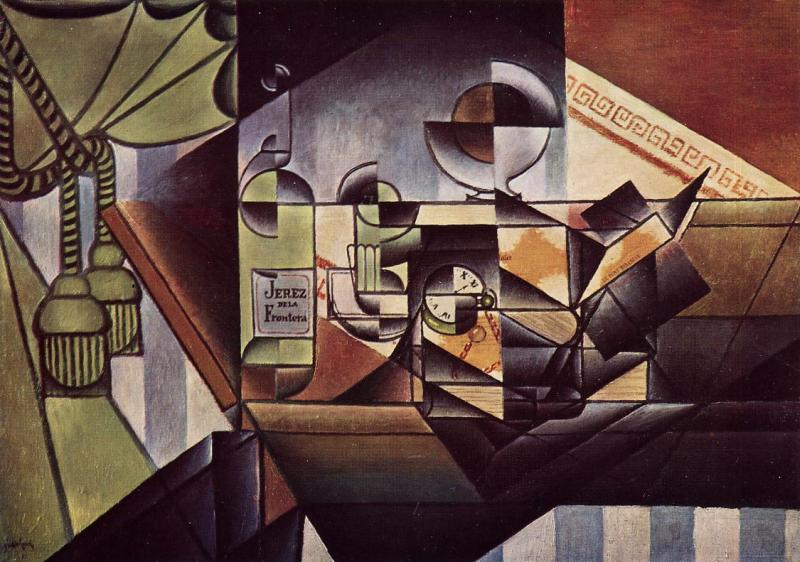
Slide 24 is based on geometric proportions. Leger’s work – he developed a more visible Cubism. Picasso had a contract with Daniel-Henri Kahnweiler who guaranteed he would buy all works based on their size so Picasso was financially secure so he could experiment. Braque also had a good contract. Picasso could keep any of his works he thought were important to his development, thus Picasso’s Picasso exhibition later showed the works he kept. Matisse had a good contract bit Leger did not have a good contract so he had to exhibit and sell. Picasso’s and Braque’s work never becomes abstract it just develops a complex language. Metzinger and Gleizes were the artist at the time considered to be Cubists. Synthetic cubists built up from single elements and so easier to understand. Cubism represents a fundamental shift from the pictorial to the conceptual. The act of looking and understanding becomes part of producing a painting.
Slide 25: Gris, Guitar with Sheet music (1926)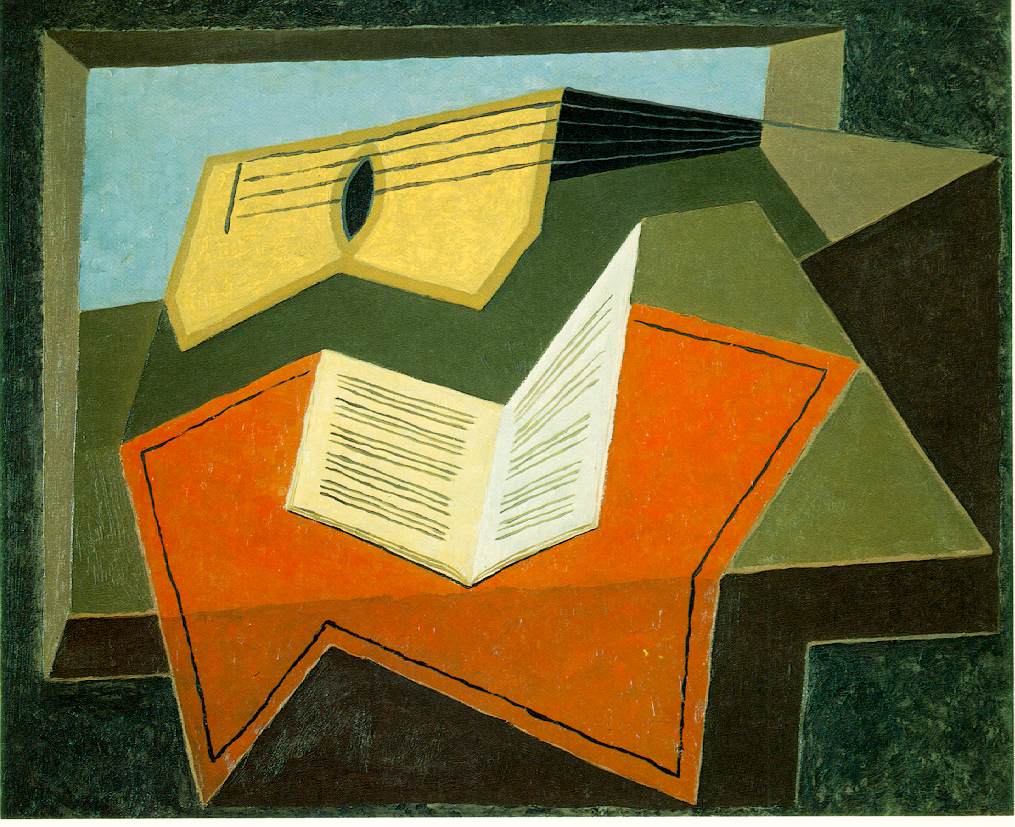
Slide 26: Fernand L'ger Rooftops of Paris (1911)(image not found)
Slide 27: L'ger, Smokers (1911)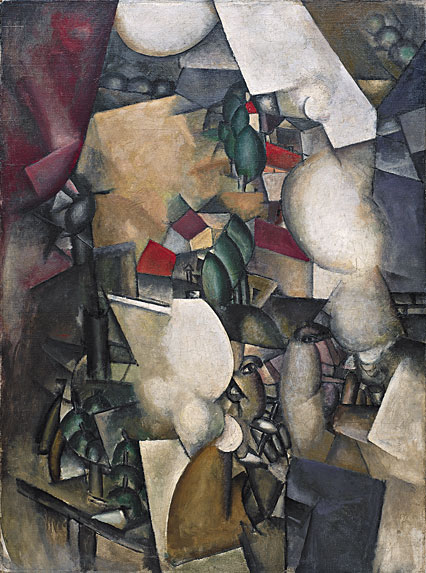
Slide 28: L'ger, Le D'jeuner (1921)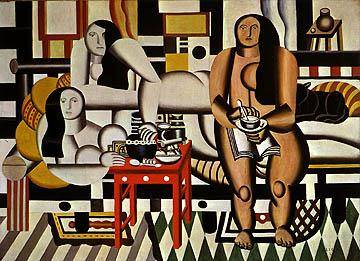
Slide 29: Leger, The Three Figures (1921)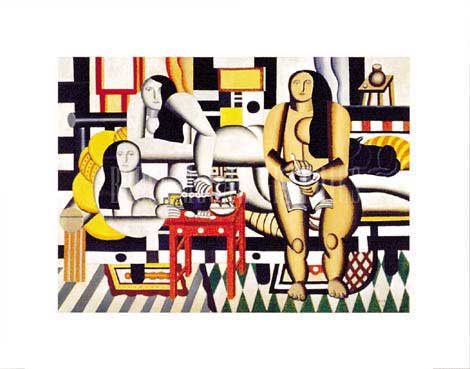
Note Three Women not Three Figures
Slide 30: Jean Metzinger, Portrait of Albert Gleizes (1912)(image not found)
Slide 31: Albert Gleizes, Man on a Balcony (Portrait of Dr. Morinaud) (1912)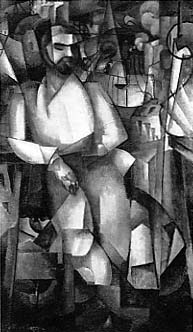
Slide 32: Metzinger, Woman with a Coffee Pot (1919)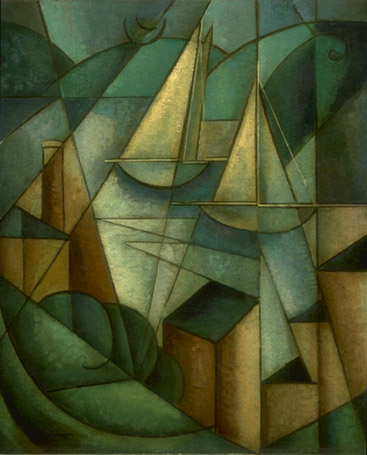
Could not find Woman with Coffee Pot, Sailboats is an example of his 1912 style

